
|
April 2010

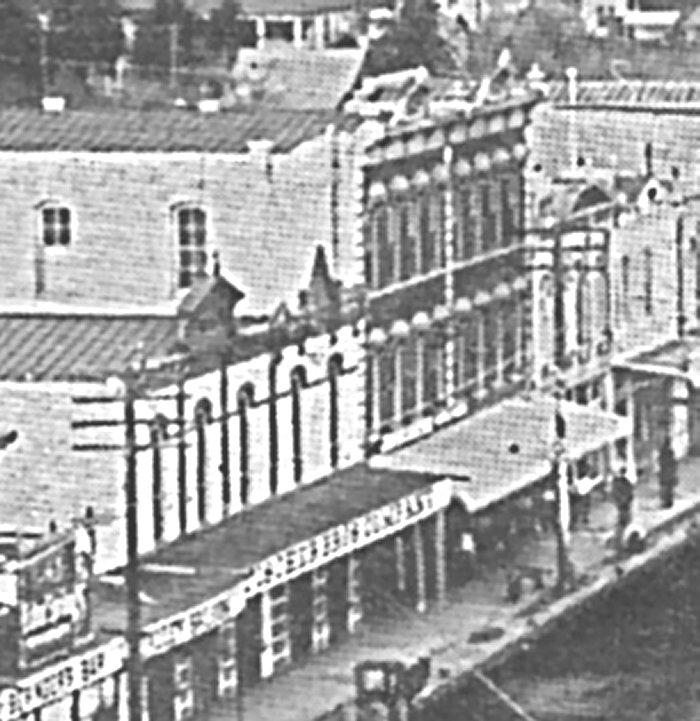 Main Street, Gonzales Texas, early 1900s
Gonzales Lodge No. 30, A. F. & A. M.
|

|
April 2010

 Main Street, Gonzales Texas, early 1900s
Gonzales Lodge No. 30, A. F. & A. M.
|
This Small Town Texas Mason's E-Magazine is not affiliated with any state Grand Lodge or individual Blue Lodge. It was created to enlighten, educate and entertain Masons and non-Masons alike.
As title suggests, each issue will feature a small town Texas Masonic Lodge and some Texas Masonic history or hero in each issue
The beliefs, ideas and opinions expressed here are strictly those of the authors and not necessarily those of the editor, any individual Blue Lodge or any state Grand Lodge.
A very sincere effort was made to avoid using any copyrighted material,
without permission or giving credit to the author, in the creation of this
web site. If you discover something that is yours, without giving you due
credit, please let me know and due credit will be given or the item will be
replaced.
Any material in this site may be used to increase the understanding of Freemasonry.
No trees were harmed in the creation of this E-magazine, however millions of electrons were temporally inconvenienced.
Gonzales Lodge No. 30, A. F. & A. M.
The "Masonry at Work" Award At Waller Lodge #808
Robert McAlpin Williamson "Three Legged Willie"
The Birth of Free-Masonry; the Creation of a Myth Part 3 of 6
A Letter Home from Mecklenburg, Virginia, 1849
Order of United American Mechanics and the Knights of Pythias
Masonic Pride Day: An Observation
The Secret Society Series - The Fourth of Six
Grenfell Masonic Lodge Farewelled
Anson Jones Marker Dedication Ceremony
Three Tory Councillors Revealed As Freemasons
Brother W. L. "Wally" Wallingford - A Truly Dedicated Texas Mason
The Really Great Masonic Educational Web Sites Series
Elizabethtown Masonic Village's Centennial
Funeral Reenactment Honors Washington, History
Robert McAlpin Williamson "Three Legged Willie"
Willie was raised in the town of Milledgeville which was the state capital of Georgia during that time. He had a privileged life, attended the best schools in the area and grew up as a member of a prominent family. And an extended family consisting of numerous lawyers, the state's governor, and a future justice of the United States Supreme Court.
Williamson became ill with "white swelling" at the age of fifteen. It later known as tubercular arthritis, a tubercular infection of the bone that usually affected children. It caused a painful swelling of weightbearing joints, and resulted in deformities of the lower extremities. He was confined to his bed for months. His right leg became paralyzed below the knee, and when he recovered he built a shortened crutch-like device, strapped it to his knee. He, covered the peg with an extra pants leg, and became known to friends as "Three-Legged Willie."
After passing the bar at about nineteen years of age, he practiced law in Georgia for about a year. In June of 1827 he fought a duel over the affections of a woman and after wounding his opponent, he fled to Texas. In Texas, he settled in San Felipe de Austin, where he became friends with Stephen F. Austin and William B. Travis.
After learning Spanish in less than a year, Robert started a law practice and when Texans began to complain about Mexican abuses of colonial rule, he was one of the first signers of convention to protest to Mexico. Robert and Godwin B. Cotton, started "The Cotton Plant" newspaper in 1829 and Robert became the first prosecuting attorney for San Felipe shortly after. He later went on to edit two other newspapers, The Texas Gazette and The Mexican Citizen.
Despite his disability, he was a capable horseman and a skilled marksman. He fought Comanche Indians on the frontier and fought the Mexican Army at the battle of Gonzales and in the battle of San Jacinto. He reportedly fought wearing a coonskin cap with nine tails attached.
He made an early appeal for the Texas colonists to resist Mexican tyranny. At Anahuac in 1832 he forced Juan Bradburn to release his imprisoned friends Patrick Jack and William B. Travis who later became the commander at the battle of the Alamo.
On December 16, 1836, Williamson was elected judge of the Third Judicial District by the First Congress of the republic. This automatically made him a member of the Supreme Court. There was no suitable building in which to hold court proceedings, in the town of Columbus. It had been burned during the Runaway Scrape. So, in the first term of District Court, Republic of Texas, it was convened by the Honorable R. M. Williamson, under a large oak tree next to the lot where the Colorado County Courthouse would later be built in April 1837. The harsh and difficult life of a circuit judge didn't seem to have bothered Judge Williamson.
The Third District of the Republic of Texas included six counties and the judge and circuit lawyers rode the circuit on horseback during all kinds of weather. They stayed where ever lodgings where available and camped out when lodgings were not available.
Williamson often entertained at evening gatherings after court sessions, playing the banjo and singing. He sang the old Negro spirituals he had learned during his childhood in Georgia. He also was known for pattin' juba, an African-American percussion style of rhythmic hand-clapping, thigh-patting, and foot stomping prevalent among slave populations; it was probably another talent he had learned during his childhood in Georgia.
Numerous stories have been told about Williamson who was full of character. One of the most famous of these stories involved the first court session held in Shelby County. The region was known for its lawlessness when two rival vigilante groups battled for control during the violent years of the Regulator-Moderator War.
As court was about to convene, a man stood before the court and made a motion that the local citizens had declared court should not be held. When Williamson asked the grounds for his request, the man reportedly plunged a Bowie knife into the table that served as the judge's dais, and stated in effect, "This is the law that governs here." Judge Williamson rose to his feet, drew his pistol, laid it on the table next to the knife, and replied, "If this is your law, this is the constitution that overrules it." The trial proceeded without further interruption, and this moment in Texas legal history provided subject matter for a painting that has hung for many years in the Texas State Bar building in Austin.
Williamson retired to his farm near Independence after his defeat in the race for Congress in 1850, where he devoted himself to the education of his children and the preparations of materials for writing a history of events in Texas leading up to the Texas Revolution. He ran unsuccessfully for lieutenant governor in 1851. In 1857 an attack of illness affected his mental brilliance, which was further impaired by the death of his wife in 1858. From these combined shocks his mind never entirely recovered.
He died at the home of his father-in-law in Wharton on December 22, 1859.
He is buried in the Texas State Cemetery.
Williamson County was named for him.
Compiled from Wikipedia, Handbook of Texas On-Line, Shelby County Texas History, Texas Escapes, Texas State Cemetery and other sources by John "Corky" Daut, P.M. Waller Masonic Lodge #808, Contributing Editor to the Grand Lodge of Texas History Committee.
Eric Ward, Ars Quatuor Coronatorum vol. 91 (for 1978) pp. 77-86 ISBN: 0 9502001 6 6.
Reprinted From The Rural Lodge Newsletter
During the 17th century, and as far as we know it was in England alone, groups of men of diverse occupations organized
themselves into small autonomous societies or lodges whose connection with the building trade was no more than nominal.
In some instances some of their members were masons by trade but that was incidental to the activities of the lodges which
were broadly speaking philosophical and social. In short, these bodies were the primitive prototypes of speculative mason
lodges of the present day.
Possibly the earliest of these lodges was that attached to but not an integral part of the London Masons' Company, whose
records show that it existed under the title 'The Acception' from at least 1630. Members were called ACCEPTED MASONS,
from which the title of the body itself was presumably derived. The earliest known printed usage of ACCEPTED MASONS occurs
in a skit printed as Poor Robin's Intelligencer for 10 October 1676. Elias Ashmole used NEW-ACCEPTED mason in his 1682
diary entry, but FREE MASON in both this and the earlier one of 1646. Charles Burman, his biographer, 'modernized' these
into FREE-MASONS in 1717. In 1686 Dr. Robert Plot wrote of the Society of FREE-MASONS and in 1688 Randle Holme III used
the same term in his An Academie of Armory. John Aubrey apparently had both FREE-MASONS and ACCEPTED MASONS in
his notes on Wiltshire in 1691, whilst an anti-masonic leaflet of 1698 had FREED MASONS. Writing in 1719, Richard Rawlinson
referred to the 'Fraternity of ADOPTED MASONS, ACCEPTED MASONS or FREE MASONS', Long Livers in 1722 had FREE MASONS
and the Roberts Constitutions (also in 1722) had FREE-MASONS.
It is obvious from the above that, in the 17th and early 18th centuries, ACCEPTED, ADOPTED and FREE were all suitable adjectives
by which to describe a member of the new kind of masonic fraternity. It would be extraordinary to find an instance of
the single word 'Freemason' being used in that connection, except of course in ignorance.
James Anderson when writing his 1723 Constitutions did not use the single word once, even when alluding to such a famous
operative as Henry Yevele, although in that instance he would have been right to have done so. Possibly this confusion was
due to a deliberate intention to avoid drawing any distinction between operatives and non-operatives and partly because of
his Scottish background and consequent unfamiliarity with freestone masons. Whatever the reasons, the 1723 Constitutions
contain approximately 126 references to MASONS, 12 to FREE MASONS, 10 to FREE and ACCEPTED MASONS, 9 to FREEMASONS, 4 to ACCEPTED MASONS and one to ACCEPTED FREE MASONS.
Knoop and Jones in Early Masonic Pamphlets reproduced forty-seven miscellaneous documents dated from 1638 to 1735, all
relative to non-operative masonry, and forty-six of them refer repeatedly to FREE-MASONS or some similar two word title.
Preston in his 1772 Illustrations of Masonry does not appear to use the single word 'Freemason' either. Mostly it is MASON,
FREE-MASON, FREE and ACCEPTED MASON and, in allusion to the Craft, FREE-MASONRY.
The first clause of the Declaration of the Act of Union in 1813 included 'By the solemn Act of union between the two Grand
Lodges of FREE-MASONS of England in December 1813, it was declared and pronounced that pure Antient Masonry . . .'
And such is the tenacity of tradition that to this day the Constitutions are addressed to FREE and ACCEPTED MASONS.
Consideration of the wide variation in terms applied to non-operative masons independent of the trade points to three significant
corollaries:
Thus during the period when our kind of non-operative masonry was beginning to take shape the distinction between a
working freemason and any other kind of stone mason was becoming blurred. There were other reasons which we need not
consider now but it is beyond doubt that the trade of freemason was not what it had been in the days of Henry Yevele. The
growth of what was to become speculative masonry coupled with changes in the building trade set the stage for further
word shifts. Having arrived at Free and Accepted Mason, the less cumbersome Free-Mason was a natural contraction more
concise for printing but, by the end of the 18th century, the unpronounceable hyphen had become a nuisance which resulted
in Freemason, the term upon which the seal of finality was set when Freemasons' Halls became familiar objects in the
popular mind.
To sum up, it has been demonstrated that the word Freemason in its medieval context was derived from Latin/Norman
French elements, anglicized, compounded and eventually simplified. The identical, but semantically different word freemason
as now commonly used to denote a member of our society is a comparatively modern adaptation which arrived through
progressive contraction of hitherto more specific terms and loan words. Since modern usage became possible only through
the obsolescence of the trade description, the tendency to equate the new with the old is etymologically untenable.
By AJ Morton
As things stand, all the leading exponents are chasing the same thing, each finding little or nothing of any substance, before writing it up as a potential bestseller. If we try to link the Templars with Freemasonry via Lothian's Rosslyn Chapel (a structure related to neither order), we are doomed to failure. The connection just isn't there. Every modern investigation has led its author to the right country (Scotland) but quite clearly to the wrong area (Lothian). As our attention shifts from Rosslyn, we will see that the county of Ayrshire plays host to the oldest titular Masonic lodge on the planet and the highest concentration of Templar properties in Scotland. Records show that the lands of both orders physically overlapped, but this fact has eluded even the most distinguished writers of Masonic history and has until now been buried in the myth of modern Templar-Mason lore.
Our new Templar -Mason journey begins in the ancient county of Cunningham (modern day north Ayrshire) at the mouth of the mysterious Irvine Valley. Kilwinning and Irvine, united since the 12th century, occupy an important and unique (yet widely ignored) position in Templar and Masonic history.
Framed by a vast natural amphitheatre, the Irvine Valley is one of the most picturesque in Britain. It is indeed "questionable if [...] so fine a natural panorama, both for richness and extent, is anywhere to be met within the lowlands of Scotland". [1] It was, to early commentators, "one of the richest and most interesting vallies [sic] in Scotland, abounding with every topographical resource..." [2]
The density of Templar holdings in Irvine is reflected in the numbers found throughout Ayrshire, and indeed the entire south -west of Scotland, where almost 200 scattered properties have been identified. This is an unusually generous sprinkling of Templars, especially when compared with those found elsewhere in Scotland. In Stirling, for example, there were only seven Templar properties; in Dundee, two; in Lanark, Ayr and Aberdeen, just one. At Rosslyn there were none.
At Irvine, there were an estimated 20 properties within the burgh, five of which were situated in or around the market centre and several more outside it. At Kilwinning, there were at least six Templar properties associated directly with the Abbey, and many others spread throughout the parish.
Currently, Mother Kilwinning sits at the top of the Grand Roll, a list of lodges ordered according to antiquity, and has done so for more than 200 years. If this is a mark of respect from an old rival in the east, why has everyone forgotten the crafty old mother and her Templars in the west?
1 The New Statistical Account of Scotland, 1845, p667.
After being discharged, he was stabbed in the chin by a drunken driver during a post - collision argument Parker required many months of rehabilitation, and was unable to participate in sports to the extent he desired. Parker graduated from the University of Texas on the G.I. Bill in 1950 with a history degree. Still having a year left on his G.I. Bill he then moved to California, where he studied drama at the University of Southern California seeking a master's degree in theater history. However minor acting jobs soon obstructed that objective.
Parker began his show -business career by summer 1951 when he had a $32 -a -week job as an extra in the play Mister Roberts, although he is credited with the voice of Leslie, the chauffeur, in the 1950 film Harvey. Within months, he was on location with a minor part in Untamed Frontier with Joseph Cotten and Shelley Winters. Parker became a contract player with Warner Brothers appearing in small roles in several films such as Springfield Rifle (1952), Island in the Sky, The Bounty Hunter and Battle Cry. In 1954, he appeared as Grat Dalton in the Jim Davis western anthology Stories of the Century in the episode The Dalton Brothers.
It was during a screening of this film that Walt Disney looked past Arness and discovered Parker. Disney was impressed by Parker's portrayal of a man who was unswerving in his belief in what he saw despite the forces of authority against him. Parker was asked to drop by the Disney Studio. When he did, he brought his guitar, met Walt, sang a song, and then said his goodbye. A couple of weeks later he was told that he had been selected over Arness and several other actors considered for the role, including Buddy Ebsen who eventually played Crockett's friend, George Russell.
Disney's portrayal of Crockett in three episodes depicted his exploits as frontiersman, congressman, and tragic hero of the Alamo, in what has been called the first television miniseries, though the term had not yet been coined. Davy Crockett was a tremendous hit with children, and led to a merchandising frenzy for coonskin caps and all things Crockett.
Parker became a contract star for Disney appearing in many films such as The Great Locomotive Chase, Old Yeller, and Westward Ho, The Wagons! but complained they were all pretty much the same role. Disney refused to loan out Parker for roles outside of that persona, such as The Searchers and Bus Stop.
Parker made guest appearances on many television programs; and composed and sang music. He performed the occasional role of Tom Conrad, editor of the Diablo Courier in the syndicated western series, Annie Oakley (1954 -1957), starring Gail Davis, Brad Johnson, and Jimmy Hawkins. In 19 62, he starred in the title role of the TV series Mr Smith Goes to Washington. Parker took to the stage in 19 63, in a traveling production of "Oklahoma!" as 'Curly'. The movie roles he sought were elusive.
Parker's Daniel Boone television series portraying another historic figure of America's frontier days began filming in 19 64. Over its six years (19 64 to 1970) as one of the highest rated shows of its time, Parker was not only the star of the series but also the co -producer and director of five of its most popular episodes.
Turning down the title role of McCloud, Parker retired from the film industry in the 1970s, after a short -lived 1974 sitcom, The Fess Parker Show.
Fess Parker was nominated for best new personality Emmy in 1954, but lost to George Gobel. The "Daniel Boone," TV series was never nominated for the Emmys.
In 2003, Parker received the Texas Cultural Trust's, "Texas Medal of Arts Award", established only the year before.
For his work with Disney, Parker was honored in December 2004 with his own tribute window on a facade in the Frontierland section of Disneyland.
After his acting career, Parker devoted much of his time to operating his Fess Parker Family Winery and Vineyards in Los Olivos, California. The winery is owned and operated by Parker's family, and has produced several different types of award -winning wines. Parkers' son, Eli is President and Director of Winemaking & Vineyard Operations while daughter, Ashley, is Vice President of Marketing & Sales.
The Parker operation includes over 1,500 acres of vineyards, and a tasting room and visitor center along the Foxen Canyon Wine Trail. In addition to wine, the winery is known for selling coon skin caps and bottle toppers, inspired by Parker's Crockett and Boone characters, and for appearing in the movie Sideways.
In a reminiscence of his acting days, Parkers' wine labels have a logo of a golden coonskin cap.
Parker married Marcella Belle Rinehart on January 18, 1960. They had two children - Fess Elisha III and Ashley Allen Rinehart - along with 11 grandchildren and a great -grandson.
Bro. Parker was a member of Mount Olive Lodge No.58 6 in California.
Parker died at age 85, of natural causes according to a spokesperson, at his home in Santa Ynez, California, near the Fess Parker Winery on March 18, 2010. His death came on the 84th birthday of his wife.[
The letter contains a description of a Masonic funeral, a "barbecue" in the woods, and a hunt on horseback with hounds. Hubbard expresses amazement at all of these activates, as they were quite different from his life back in Massachusetts.
First, Hubbard described the Masonic funeral. He writes that the funeral took place "under a large arbor built in the front yard, the house was also full so we took seats in the arbor." He reports that there were about 100 Masons from 4 different lodges who marched in procession two - by - two for the Masonic funeral of a Mr. Parish. He describes the Masons as dressed in white aprons, white scarves, with a piece of white fabric around their hats. The account continues, "The grave was not in the field, a short distance from the house and was surrounded by posts, with a rope, passing around them, so as to form alarge circle." Hubbard and the rest of the spectators stayed outside the rope. The Masons marched into the circle headed by a man carrying a large Bible and then stood in a ring around the open grave. Four Masons placed a black piece of board in the shape of a coffin in the grave. Another read from the Bible and talked to the other Masons. Then "they put in a white lambskin aprin [sic], which they said was an emblem of innocence." The Masons circled the grave and each one threw in a piece of cedar, an emblem of faith according to Hubbard's account. And, in fact, Hubbard was correct: The cedar tree is known for its long lasting qualities and is considered a symbol of eternity in Freemasonry.
Hubbard further recounts the Masonic funeral, explaining that the Masons at the funeral "all stood in a ring again, and clapped their hands first over their heads, and then across the breast, then down at the side, repeating it 3 times." This "salute" is known as the public "grand honors," and is still used in Freemasonry today. Finally, one Mason from each lodge threw a spade of earth on the grave and they all took turns until it was filled.
In addition to the Masonic funeral, Hubbard also describes other local events, including a July 4th "barbacue" held in the woods by the Virginians he was with. This was a new way of celebrating Independence Day to this Northerner. First a large ditch, or pit, was dug "as long as your school house" and 2 or 3 feet deep. Next, hickory poles were laid across it. Finally, the sheep, lambs, and shoats [piglets] were dressed whole and spread across the poles to roast. They were then rubbed continuously with butter, pepper, salt, and vinegar. Live red coals from a nearby fire were "shoveled in under the meat to keep it roasting."
And finally, another activity that Hubbard describes in his letter home is the gentlemen's hunt. He writes that these Virginia hunters, with horns around their neck and shoulders, took a pack of hounds with them out to hunt. When the hunters wanted to call their pack of hounds together, they would blow the horn. Even though there were several packs of hounds out, each dog responded to its own horn as well as its name. While this method of hunting was traditional in the South, it was quite novel to this Northerner.
Founded in Philadelphia, Pennsylvania, in 1845, the Order of United American Mechanics was a patriotic, social and benevolent fraternity that aimed to help native - born Americans find employment, and to assist member's widows and
The print at right is titled The Brotherhood of Pythianism. The Knights of Pythias was founded in 18 64 in Washington, D.C., to renew brotherly spirit in the wake of the Civil War. Founder Justus H. Rathbone (1839 -1889), possibly the man depicted at the top of the print, was a Freemason. Like Freemasonry, the Knights of Pythias awarded three degrees through rituals. However, the Knights' rituals followed the story of the friendship of Damon and Pythias, rather than the building of King Solomon's temple. This print prominently displays the group's motto, "Friendship, Charity, Benevolence."
by 47th Problem of Euclid
I had a train journey to visit relatives this holiday season. To prepare for the train journey, I visited my Grand Lodge library (as every good Mason should do from time to time), and selected Masonry in Texas: Background, History, and Influence to 184 6, by James David Carter (1955), as my reading material on the train.
Carter begins with a history of Freemasonry, and its early days in Britain, France and Spain. Then he gives the history of Freemasonry in Colonial America. What follows is a detailed examination of the role of Freemasonry in the American Revolution, showing the Masons on both sides of that struggle, and the role of Freemasonry in establishing the government of the United States. He then shows something similar taking place in Mexico, but different due to the undue influence of politics in the Mexican version of Freemasonry.
Two hundred pages into the book, he begins to write about Texas, showing the influence of Freemasonry on the original Anglo -Amerrican colonization of Texas, how the Anglo -American Texas Masons interacted with the Mexican Freemasons, and ultimately what led to Texas' revolution against the newly -independent Mexican state. He finishes with an analysis of Masonry's contribution to the Republic of Texas, and how Masons led the delicate process of annexation with the USA.
I am going to offer a long quote from the conclusion of the book, as evidence of an author who takes a deep pride in Freemasonry, and wants very much to give our Fraternity its due as a contributor to living history. As you read this quote, try to imagine any Masonic author of the present day using language like this:
Among other definitions, Freemasonry is a corporate school of liberal philosophy erected upon the ruins of craft guild masonry from which it drew its principal thesis that the individual was of supreme worth and capable of perfectibility.
As a broad philosophy, Freemasonry qualifies as a vital sociological force and its lodges provide the essential conditions for the formation of a type that can be relied upon to translate Masonic philosophy into conduct in society.
Freemasonry was the only organized philosophic institution common to all the British colonies in North America which became the United States.
The character of the people in the British North American colonies; the environment of the region; the lack of the ability of English authorities to control thought and action in the New World provided a fertile field for the development of liberal thought as taught by Masonic lodges.
Masonry drew the leading citizens of scores of colonial towns and villages into the bonds of unity and brotherhood thereby establishing the mutual trust and confidence that helped to make colonial cooperation possible in a common cause.
Masons provided the leadership for the events that brought about the conflict between England and America.
Masons led the propaganda campaign which nurtured widespread disorder into revolution.
Masons led in the overthrow of royal government in the colonies and erected revolutionary governments.
Masons led in the erection of a loose confederation of the states for united action in the war.
Masons led the army, navy, and marine corps in the battles of the American Revolution.
Foreign aid for the revolutionary efforts was secured partially through the efforts of Masons.
All of the chief leaders of the French forces and the more important foreign officers in the American Revolution were Masons.
Masonry provided a philosophic basis for the justification of the Revolution, not only in America and in France but also in Britain where Masons influenced the government to accept peace terms more favorable to the Americans than the events of the war would seem to justify.
Many of the most important leaders in the development of a federal union - the organization form of Freemasonry - were Masons.
Many of the men who influenced the writing and who wrote the Constitution of the United States were Masons well informed in Masonic philosophy, practice, and organization.
The fundamental principles laid down for the government of the Masonic fraternity in its oldest surviving documents are found to be present in the Constitution of the United States.
Many Masons fostered the formation of a public free school system supported by the state in the United States.
The policy of admitting new states to the union on a basis of complete equality with the old is a policy parallel to that practiced in the creation of new Masonic lodges.
Masons occupied many influential offices in the executive, legislative, and judicial branches of the United States government in the period of its greatest plasticity.
Freemasonry was one of the earliest institutions to find lodgement on the successive frontiers as the Anglo -Americans moved westward across North America.
Masons were frequently the first to establish churches, schools, newspapers, and other institutions of public service and convenience in the territories opened to settlement by soldier Masons.
No United States territorial or state government was established in the areas considered in this study without the support and participation of Masons and often they were the prime movers.
Masonry was a civilizing force in the raw, half -wild population that contributed a substantial proportion of the Anglo -American colonists of Texas before 184 6, as well as a cultural force in the more highly developed areas of the United States that contributed the additional portion.
Though Masonry was introduced into Mexico and contributed to the revolution which established the liberal Constitution of 1824, it failed to secure enough support to insure the permanent overthrow of privileged oligarchy by 1835.
Anglo -American colonization of Texas was permitted and encouraged by a Mexican government in which Masons occupied influential positions.
Masons led the conservative forces in Texas that sought to maintain the Constitution of 1824 as the basis of the government of Mexico and were supported by a number of Mexican liberals whose most prominent leaders were Masons.
The reactionary Centralist Party in Mexico was led by men who had seized control of the Mexican government through the prostitution of Masonic lodges into nuclei of political parties and then destroyed the lodges to prevent a resurgence of liberalism through Masonry.
There was little difference in the physical equipment of the peoples of Spanish and English descent for the development of Texas but they were dominated by diametrically opposing philosophies. Those of Spanish descent failed to make material progress in Texas in over one hundred years of possession while Anglo - Americans, with a strong Masonic heritage, made marked progress in the development of the province in fifteen years.
Of the twelve battles and skirmishes of the Texas Revolution treated in this study, ten were won by the Texans. The percentage of Masons in these winning forces ranged from 6. 6 to 27.5 per cent. In the two battles lost, the Alamo and Coleto, the percentage of Masons was 3.1 and 2.5 per cent. In all of the battles, Masons constituted a higher percentage of the Texan force involved than their percentage in the population.
Masons constituted a stabilizing and directing force in the confused condition of Texas following the Revolution.
Masons consistently occupied the most important government offices under the Republic of Texas.
Masons were consistent in defending Texas from Mexican incursions and depredations by the Indians.
Masons were prominent leaders in efforts to establish a public free school system supported by the state in Texas.
Masons supported a complete separation of church and state in Texas.
Masonic lodges exercised a degree of social control which strengthened the rule of law and order in Texas.
These factors in the development of American life were not all exclusive to Masonry. Some existed in one institution and some in another. Many forces, economic, social, environmental, intellectual, hereditary, and others, have made their contribution to the sum total of American culture. It appears, however, that historians and political theorists have overlooked a major influence in American history and government. With due regard for the molding influences heretofore identified by scholars of American history, it is submitted that Freemasonry is one of the most powerful intellectual forces that contributed to the shaping of the history of the United States and Texas between 1750 and 1845.
This book is a great read, if you can get your hands on it. We should all give Freemasonry the credit it deserves in building the USA, Canada and Mexico, and elsewhere around the world where it continues to shine a light of freedom and equality, brotherhood and truth. It should be noted that by liberal, the author is using the word in its 18 -19th century meaning, and not in its contemporary meaning.
There is another well documented acknowledgement of De Kalb’s membership in the fraternity of Freemasons. Known Freemason, close friend of De Kalb, and fellow Revolutionary War general – the Marquis de Lafayette – returned to the United States from France in 1824 and – on 9 March of the following year – presided over the Masonic cornerstone laying ceremony at the monument erected at the site in Camden, South Carolina, where De Kalb’s remains had been re -interred
The fact remains, however, that no researcher has been able to pinpoint with accuracy the time and place that De Kalb became a Freemason – though there is one very plausible theory that involves General Mordecai Gist and a military lodge. Gist, who would later become the second Grand Master of the Ancient York Masons of South Carolina, was in proximity to De Kalb on the right side of the Patriot line during the Battle of Camden. Gist – at the time of the battle – was the Master of Army Lodge Number 27, which had been warranted by the Grand Lodge of Pennsylvania, and commander of the Second Maryland Brigade, which was part of the Maryland Line commanded by De Kalb.
No conspiracy. Come see for yourselves, say
By STEVEN LEMONGELLO
LINWOOD - "People say we're a 'secret organization,' and that most certainly is not true," said Deputy Grand
Master Gerry Sharpe. "If we were, you wouldn't know who I was."
In the wake of "The Lost Symbol," the latest conspiracy -fueled novel by author Dan Brown, the Freemasons
are experiencing a sudden moment in the spotlight - and contrary to the image many have of Freemasonry as
a shadowy, behind -the -scenes organization, the Masons are welcoming it.
"The bestseller is definitely going to peak some interest in Freemasonry," said Sharpe. "We're hoping to capitalize
on some of that free publicity."
Across New Jersey on Saturday, Masonic Lodges threw open their doors to the public for the first -ever
multiple open houses in state history. For one day, anyone could stop by lodge buildings, such as one
shared by Justice Lodge 285 and Keystone Lodge 153 in Linwood, and see the ins and outs of Masonry for
themselves.
"We were trying to open doors," said Sharpe, a former Northfield resident who now lives in Weymouth Township.
"In the past, Masons have been rather secretive. My father never said, 'You should consider joining the
Masons.' You have to ask. If I had been to an (open house) like this, I would have asked. We need to do this
kind of PR to attract new membership."
Now, it may be tough to explain how your group is merely a friendly fraternal organization as you point out
where the Worshipful Master sits on his throne, but the rituals and rites of Masonry are a tradition that dates
back centuries - and they're proud of it.
The group was revived in England in 1717, he said, "and they basically set the way we do things today."
Famous Masons include George Washington, Paul Revere and the Marquis de Lafayette, and Sharpe likes to
quote one famous Mason's quip about how "secret" the order really is.
"The biggest secret of Freemasonry," Ben Franklin is reported to have said, "is that we really don't have any
secrets."
As for any hidden meanings to the group's symbols, the main symbol of Masonry, the "square and compass,"
does have meanings other than a tool of actual medieval masonry.
"The square teaches us square actions," Sharpe said. "It's the square of morality and virtue. The compass tells
us to keep our passions within due bounds."
The "G" in the center, he added, stands for God. The only requirement of Masonry - besides being male, of
course - is that the prospective member believe in a supreme being. Several lodges have Muslim members
who have taken the Masonic oath on a Koran, Sharpe said, and there also are many Jewish members.
As for that pyramid with the eye on top - the "Eye of Providence" that is at the center of many Masonic conspiracy
theories - it is a myth that Masons had anything to do with the decision to place it on the back of the
dollar bill. The eye, by most accounts, actually became the "Great Seal of the United States" before it was
ever associated with Masonry.
Grenfell Masonic Lodge Farewelled
From The Grenfell Record - Australia
The Grenfell Masonic Lodge of St Andrew No 33 closed its doors for the last time last Tuesday evening. This brings to an end almost a century and a half of Masonic involvement in the Grenfell Community.
The first Lodge was formed in 18 67 after an advertisement was placed in the Grenfell Record (then called the Mining Record) on September 1st announcing that a meeting would be held the following Tuesday at the Thistle Hotel (rear of the Royal Hotel) at 8.pm. At this meeting Bro.EW King was elected Chairman and a Building Committee was formed.
A fire destroyed the regular meeting place, ie the Thistle Hotel, and all the records were destroyed. This caused a cessation of Lodge activities for over 4 years.
However in June 1902 the lodge acquired its own land and building on the present site was acquired and the commencement of building on the site of a temple commenced.
From that date on all meetings were held at the present site and the building saw several additions and modifications until the present building as we know was completed.
The Lodge will be missed by the community as it had played a major role in charity circles as well as contributing to the community in many ways, although their good deeds were never trumpeted by the members.
Some 15 years ago there were some 1 60 member however that number dwindled until this week saw only 1 6 members participating in the Farewell ceremony on Tuesday evening.
Following the official last service at the Lodge some 90 people from other Lodges such as Cowra, Canowindra, Young, Harden, Forbes, Parkes, Peak Hill and Orange took part in the Farewell Dinner held at the Grenfell Lodge. The evening's social activities commenced with a Toast, followed by the piping in of the Haggis by Piper Don Peck and then the Ode to the Haggis was given by Neil Gilmore before the Farewell Dinner was commenced. Toasts were also given to the Queen, the Grand Master, St Andrew's Lodge and the Junior Wardens.
The entertainment was provided by Wor. Brother Don Peck, Brother John Phillips and Neil Gilmore.
The Words of Wisdom at the Dinner was delivered by the Wor. Brother Bill Atchison who is a well -known Weddin Shire Councillor.
All in all, a very emotional and moving ceremony that touched the hearts of those present.
The remaining Grenfell Members of the Lodge will now amalgamate with the Cowra Lodge will be no known as the The Cowra Lodge 33.
They will be greatly missed by the Grenfell Community.
"It hurts me deeply to see any Lodge close, especially when 1 6 members are attending meetings.
By Very Worshipful Bro. Don Paterson
None of the members seem to think that retaining or re -activating old members is as important as new members. There seems to be little thought and few conclusions as to why people join in the first place and why they leave. However there are a few common themes. The most important seem to be that the image of the organisation may not be conducive to joining and if on joining the organisation does not fulfil expectations members will leave, or at the very least, not continue to participate.
Lack of harmony seems to be the biggest reason for leaving. The other is when members feel themselves to be disenfranchised. If people join a political party to influence policy and the Branches are stacked by members who are normally never seen except every time an important vote is taken, members become alienated and leave. The same could be said of Freemasonry if there is too much centralization of power and insufficient participation allowed from individual Craft Lodges.
If people join an organisation because they think it has good community standing and that they will be able to meet and associate with its distinguished leaders they will often be disappointed. All too often the ambitious join organizations to attain a position that they could never achieve in their normal daily lives and professions. They try to gravitate to the top, often introducing organizational politics and bring little or nothing to the organisation. Members become disillusioned.
In most cases the grass roots organisation is blamed for a lack of new members. We hear "the congregation members must bring in more members", "...the Branches must get more members and do more fund -raising", or "...the Craft Lodges do not introduce enough new candidates", and so on. But the root cause of lack of new members is more likely to be the "product", the image of the organisation and its leaders. Most of these issues are in the hands of the controlling body, not the subordinate elements.
Organizations with declining membership need to have a good hard look at themselves. Sometimes this never occurs before it is too late. Let's hope that Freemasonry does not suffer that fate.
From the
Masons Of Texas
The word "Accepted" also goes back to the time of the operative mason. During the latter years of the Middle Ages, there were few educated men outside the monasteries of the world. Naturally, men wanted to become Freemasons to obtain the advantages the craft had to offer. These men did not necessarily want to build buildings; they wanted to belong to the organization. These were "Accepted" Masons, rather than operative masons. This practice probably originated when some of the people for whom the craftsmen were working asked to be admitted. This was an important transition for the Craft, because the secrets of the building trades were becoming more widely known, architecture was changing and membership was declining. By becoming "Speculative," the Craft grew rapidly. As time went on, there became many more "Accepted" members than there were operative members, and eventually we became a Speculative rather than an operative organization.
Titles of Grand Lodges in the United States also vary. Some are called A.F. & A.M., which means Ancient Free and Accepted Masons. The other most commonly used title is F. & A.M., or Free and Accepted Masons. The reason for this difference is that in England, when Grand Lodges first started, there was a rivalry between two different factions. One faction adopted the title "Ancient" and the other was called "Modern". This carried over to the United States, where Grand Lodges were styled either A.F. & A.M. or F. & A.M.. However, because of the complex situation of charters in the U.S., there is currently no logical connection between either of the terms and the origins of American Grand Lodges. In Texas, we call ourselves A.F. & A.M.
For more detailed information on this dedication ceremony visit the Texas Heritage Society Web Site:
http://texasheritagesociety.org/Anson -Jones -Marker -Photos -Page -.html
After the war, Jones returned to his medical practice and in 1837 was elected to the House of Representatives. That year, he was also elected as the first Grand Master of Masons in Texas and was among the noted charter members who organized the Philosophical Society of Texas. In 1838, Sam Houston appointed Jones as Minister Plenipotentiary of the Republic of Texas. In this position, he began to stimulate American support for annexation by strengthening Texas' ties with Great Britain and France, playing at U.S. insecurities.
Jones married Mary Smith McCrory in 1840; she was later elected the first president of the daughters of the republic of Texas. In 1841, President Houston appointed Jones as secretary of state, where he further encouraged annexation. In 1844, Jones was elected president of the republic of Texas; he became the country's last president when the U.S. Annexed Texas on December 29, 1845. At a formal ceremony in Austin on February 19, 184 6, Jones lowered the lone star flag and declared, "The republic of Texas is no more." He retired to Barrington, his plantation near what is now Washington -on -the -Brazos, where he spent much of his time writing. Today, Anson Jones is remembered for his multitude of accomplishments, including those that earned him the nickname, "The architect of annexation."
From The Rural Lodge Newsletter
Three Hastings councillors have been revealed as Freemasons
- including the head of planning and the man driving the
one hundred million Pound link road scheme. Conservatives Terry Fawthrop,
Matthew Lock and John Wilson are all members of the clandestine
organisation which has at its heart a pledge to help
out other masons. The Observer made the discovery after
trawling through council records at the town hall - records
which carry details of councillors' outside interests.
Part of that role sees him leading the Hastings Bexhill
Link Road scheme. However, the Tory hit back at concerns
being a freemason may be a conflict of interests with his work
as a councillor.
Speaking to the Observer, Cllr Lock said: "Being a freemason is an important part of my life. It is an escape
from the very public life of being a councillor. "The two things are very separate and I do not let them cross
over. No mason has ever approached me and asked me to push things through for them. I wouldn't be very
happy if they did.
"The Freemasons is a charitable organisation and one which I get a lot of pleasure from being a member of. If
however I was working as a councillor and was involved in any form of decision making on either a fellow mason,
or the lodge, I would declare an interest and leave the room.
"Over the last ten years the Freemasons have become far more open. We are far from a secret underground
movement."
Local Labour leader Cllr Jeremy Birch said he hoped that membership of what he called a "secret brotherhood"
would not influence decision making and that there were no councillors who had failed to declare their
mason membership.
The Observer also uncovered some other interesting outside interests among councillors.
THE BATTLE FOR HASTINGS
Labour councillor Andrew Cartwright is a member of Greenpeace and Friends of the Earth while his colleague
Cllr Peter Chowney has backed the Cuba Solidarity Campaign. And council leader Peter Pragnell felt the need
to declare the fact he is a long -suffering member of the Hastings and Bexhill Charlton Athletic Supporters'
Club. With the team currently slumming it in League One, it probably wasn't something he wanted to shout
about.
Rye is exactly the kind of town that Brother Rudyard Kipling wrote about...
If you wake at midnight, and hear a horse's feet,
Don't go drawing back the blind, or looking in the street.
Them that ask no questions isn't told a lie.
Watch the wall, my darling, while the Gentlemen go by!
Five and twenty ponies,
Trotting through the dark -
Brandy for the Parson,
'Baccy for the Clerk;
Laces for a lady, letters for a spy,
And watch the wall, my darling, while the Gentlemen go by!
Running round the woodlump if you chance to find
Little barrels, roped and tarred, all full of brandy -wine,
Don't you shout to come and look, nor use 'em for your play.
Put the brishwood back again -and they'll be gone next day!
If you see the stable -door setting open wide;
If you see a tired horse lying down inside;
If your mother mends a coat cut about and tore;
If the lining's wet and warm -don't you ask no more!
If you meet King George's men, dressed in blue and red,
You be careful what you say, and mindful what is said.
If they call you "pretty maid," and chuck you 'neath the chin,
Don't you tell where no one is, nor yet where no one's been!
Knocks and footsteps round the house -whistles after dark -
You've no call for running out till the house -dogs bark.
Trusty's here, and Pincher's here, and see how dumb they lie -
They don't fret to follow when the Gentlemen go by!
If you do as you've been told, 'likely there's a chance,
You'll be given a dainty doll, all the way from France,
With a cap of Valenciennes, and a velvet hood -
A present from the Gentlemen, along o' being good!
Five and twenty ponies,
Trotting through the dark -
Brandy for the Parson,
'Baccy for the Clerk;
Them that asks no questions isn't told a lie -
Watch the wall, my darling, while the Gentlemen go by!
I recently received the following email from Brother John Hale, the Treasurer of Planters Masonic Lodge #147 AF & AM in Plantersville, Texas. It's another Small Town Texas Masonic Lodge.
I never got to know Brother Wally myself, because he had transfered from Hempstead Lodge before I became a member, but while I was the secretary for Hempstead Masonic Lodge #808 for six years, I knew his brother George G. Wallingford who was raised a couple of month before Wally in 1947. However, I had heard the Wallingford name all my life as my mother was friends with the Wallingford family here in Pine Island when she was growing up in the early nineteen teens and twentys.
After the email from Brother Hale, I contacted Brother Randal Smallwood, theSecretary of Planters Masonic Lodge #147 and received the following information from him.
You can always find Brother Wally at Planters Lodge on the third Friday of the month for the Stated meeting as he has been doing for the past 25 years.
He is also at the Lodge every Tuesday night teaching the new Brothers and helping the older ones. Except of course, when he is at the Town Hall meeting, where he has been a board member for quite some time.
He is there to help in all the Town Hall fund raisers which has given many young adults scholarships for college.
Wally makes sure that the Lodge building is open and available for the Plantersville Cemetery Association when they have a meeting. You may catch him in the summertime mowing around Town Hall or the Lodge or helping some local neighbor with their mowing chores.
If you do not see Wally in Plantersville, he is probably taking some new masons to visit other Lodges in the area to assist with degree work.
If, at any time, you need Wally's help and you ask him "What are you doing tomorrow?" He will always respond, "tomorrow is my day off."
During some of those sixty years, Wally worked for the light company and when he retired, he moved to Plantersville.
In this day and age young people are reluctant to get involved in Masonry or other volunteer endeavors. I have heard the excuse that they do not have enough time. If Wally could find the time to accomplish not only the sixty -year certificate, but all that he continues to do for his Lodge, his community, Masonry in general and everyone who is blessed to know him, we should be ashamed if we use such excuses.
There is not a soul living or who has ever lived that did anything less than love this Great man!
Brother Wally at an Installation and receiving one of his many awards
.
The Handbook Of Texas Online" web site was one of the first web sites that I used years ago to find historical Texas Masonic material for the Hempstead #749 AF & AM newsletter. I started writing it back in 2000. So I have be using the site for about 10 years and I still go back to it very often for research. It is not a Masonic web site as such, however it probably has more about Texas Masonic history and heroes then most Masonic sites. The Wikipedia web site describes the "Handbook Of Texas Online" as a comprehensive encyclopedia of Texas geography, history, and historical persons published by the Texas State Historical Association (TSHA). It has comprehensive information about Texas Freemasonry and Freemasons for both members of the craft and curious non -members.
From The
What did they do at the Lodge, he asked?
"Ride the goat, son," his father replied.
This answer to protect the secrets of Freemasonry would, years later, give Mr Rose the title to his book Riding The Goat, The Secret World of Australian Freemasonry.
He was first inspired when he started reading his father's Freemasons ritual book.
Intrigued by the dashes in the writing, he started 'decoding' it.
"I just got hooked on it," he said.
It took 10 years of researching and writing to complete the work, in between writing the book Man Overboard with his wife Sandra.
"I didn't want to join (the society)," Mr Rose explained.
If he joined, he would be sworn to secrecy and couldn't write the book.
Dedicated to his father, the book goes into historic detail about the 'society with secrets', including the story behind its regalia and oaths.
It's interspersed with snippets of trivia, such as the fact that Kitchener and Field Marshall Lord Frederick Roberts attended harmonious Masonic meetings while fighting on opposite sides of World War 1.
Mr Rose's research involved visiting main lodges around Australia and overseas, including the Grand Lodge in England and France.
"Nearly every small town in Australia has a freemasons' lodge," he said.
"I think of lot of guys did it as family tradition."
It is claimed to be the largest and oldest fraternity in the world, peaking in the 19 60s when an estimated one in 11 adult males was a Freemason.
Mr Rose described them as the "movers and shakers" of society.
However, he notes the average age of lodge members is now increasing, and fears if the society does not revitalise itself, it will die out.
"This brotherhood of men under the fatherhood of God has promoted tolerance amongst men (and non -Craft women freemasons) of different political and religious beliefs, and has been a significant force for good within society," he wrote.
"It would be unfortunate if Freemasonry continued its decline, although this could be a natural consequence of losing relevance in today's fast moving world."
The book retails for $45 and can be ordered at redrosebooks.com.au and at selected independent bookstores.
On June 25, 1910, the Grand Lodge of Pennsylvania opened the doors to its new Masonic Village in Elizabethtown. Over the years, the Village has become not only a retirement community but also a health care center, a children's home and a valuable asset to the community. Now, in 2010, the Masonic Village is celebrating its 100th anniversary.
"Our centennial is exciting because while much has changed on our campus ... our mission to provide loving care and services to our residents and the community ... has remained timeless," Lindsay de Bien, public relations coordinator for the Masonic Village, said.
Some of the many exciting events taking place include a musical celebration culminating in fireworks June 25. A coffee -table -style book titled "Masonic Village: 100th Anniversary" will also be available, beginning June 25.
The Masonic Fraternity is often seen as mysterious, but they are simply an organization of men who have committed themselves to the values of brotherly love, charity and truth.
The Masons chose the location of Elizabethtown for many reasons, such as the availability of land, the large fresh water supply, the fertile soil, the closeness of the railroad station, and the proximity to Harrisburg and York. All of these factors contributed to the Village's current status as a staple of the community.
Because of the closeness of the Village to campus, Etown students have had the privilege of volunteering and interacting with members of the Masonic Village for years. This is only possible because of the Masonic Village's shared value of the importance of service.
"I think the attitudes of the people working at Masonic Village definitely reflect Etown's motto to 'Educate for Service.' Everyone there is so willing to help everyone out and answer all the questions that I throw at them," said Lauren Ott, a junior occupational therapy major completing her field work at the Village.
Not only occupational therapy majors can interact with the Village. Anyone with a heart to volunteer can do so through the Center for Global Citizenship. It is just one of the many ways Elizabethtown students can fulfill the College's motto.
"We have been given such great opportunities here at Etown, and, honestly, I don't see the point to education, talents or wealth if we don't use those things to make our world a better place," Ott said.
The 100th anniversary of the Masonic Village is another reason to celebrate not only the rich history of the Village, but also the value of service in the community.
"With a farmer's market, wellness center, a pool which community members may join, rehab services, various employment and volunteer opportunities, tutoring by residents, use of campus amenities by numerous not -for -profits, the Conoy Creek restoration project, and beautiful walking paths, the Masonic Village has something to offer everyone," de Bien said.
Where does the Village's commitment to service come from? The Mason community sticks to four main values: quality of life, respect for the individual, quality of service and outreach.
"My father and brother are Masons, and their main goal is to protect the values of the American family. Community service is just one of the many ways they do that," first -year Courtney Comstock said.
It is hard to imagine such an extensive organization, dating back hundreds of years, that cares so much about the people around them. Yet, the Village is the 10th -largest nonprofit senior living community and service organization in the United States.
"Our community members are our neighbors. We share common needs and interests," de Bien said.
Perhaps Etown has become so devoted to service by being so close in proximity to this humble organization.
"Service in the community, whether it is local, domestic or abroad, helps to make our world a better place to live and brings us closer to our neighbors," Nancy Valkenburg, director of civic engagement at Etown said. "Elizabethtown College has a commitment to service. We have that in common with the Masonic Village. 'Educate for Service' is a motto worth living!"
Join in the celebration this year through living by not only Elizabethtown College's motto, but also by the values of the Masonic Village. Get out and help your neighbors, your community and your world!
Freemasonry and fraternity
No, the Masonic Village residents have not been secretly hosting frat parties for the past 100 years, nor do they belong to that kind of fraternity. The Freemasons comprise the oldest and largest brotherhood organization in the world, founded on the ideals of love, charity and truth, sometime in the Middle Ages. As purported on the Masonic Village Web site, Freemasonry aims "to make good men better."
But don't worry, ladies; Freemasonry isn't just a boys' club. In the 1800s, the Masonic Organization created the Order of the Eastern Star (established 1855), the Order of the Amaranth (1873) and the White Shrine Jerusalem (1894) as women -oriented affiliations of the Freemason brotherhood. The Masonic Organization also supports many youth organizations, including the Order of DeMolay, the International Order of Rainbow for Girls and the International Order of Job's Daughters. These groups focus on character development, community service and leadership.
Where do I sign up?
In Pennsylvania, Freemason hopefuls have to be recommended for membership through a Masonic friend - and, of course, must be of the male persuasion (sorry, ladies!). Once a dedicated dude receives said recommendation, he must then submit his age, occupation and place of residence via a signed petition. This petition is voted on anonymously by lodge members, and the ballot must be unanimous for acceptance into the Freemasons. Additional membership requirements include the following, according to the Masonic Village Web site:
Age of at least 18 years
Belief in the existence of a Supreme Being
Here's a handy list of famous Freemasons:
"This ritual is called ... Crossing the Desert"
OK, OK - for all you "Simpsons" fans out there, the Freemasons aren't actually synonymous with the Stonecutters. However, all Masonic meetings are grounded in ritual. Though each Jurisdiction (regional body of Masonry) may choose its own meeting format, all Jurisdictions utilize medieval stonemason tools symbolically to teach lessons of morality and ethics. Most common among these tools are the square and the compass.
Additionally, a candidate must progress through different degrees (steps) of initiation before he is deemed a member of the Masonry. In some Jurisdictions, a man is considered a Mason after concluding the Initiatory Degree, while other Jurisdictions also require him to complete the Fellowcraft and Master Mason Degrees. Don't confuse the process with LAIRE from "Role Models;" this is serious business.
However, the secret society rumors do have some justification; Freemasons often use special signs (gestures), grips (handshakes) and passwords to recognize each other and to gain admission to meetings.
By Emily Heglund
The St. Marys Masonic Lodge will reenact the funeral procession held in the city in 1799 for former president George Washington. The procession used to be an annual event that celebrated Washington and honored St. Marys' history, but it died out in the late 1980s.
"I keep hearing a lot of people say, 'I wish they would do that again,'" said Bob Morgan, a member of the St. Marys and Folkston Masonic lodges. "We're making this a community involvement event."
This weekend's procession, scheduled for 3 p.m. Sunday in downtown St. Marys, will feature music by Camden County High School band students, a military color guard and a riderless horse provided by Palmetto Oaks Stables, an equine therapy center located near Woodbine.
"That symbolizes the fallen person," Morgan said of the horse. "It's a symbolic gesture."
Masonic lodge members will dress in period clothing, and a carriage will transport an empty coffin from the lodge at 203 Wheeler St. to the St. Marys waterfront. The gestures are meant to be a tribute to Washington and the sacrifices he and others made for the United States.
"They committed high treason when they broke away from England," Morgan said. "They took a chance in life ... to give us this great country we have today."
The event will also highlight Camden County's role in the Washington era. According to the National Park Service (NPS) Web site, the Dungeness ruins on Cumberland Island housed British forces after Adm. George Cockburn landed on the island in January 1815.
Unaware that the War of 1812 was over, Cockburn liberated hundreds of slaves along the Georgia coast between January and March, according to the NPS site.
Also, a cannon battery was constructed on the Point Peter peninsula in 1795 and was later used by former Georgia governor George Matthews, who led the unsanctioned invasion of Spanish Florida from Point Peter. A historical marker was installed several years ago at Point Peter.
"St. Marys and Camden County have some awesome history of the Revolutionary War," Morgan said. "We hope to make this an annual event and festival."
He said the Bryan -Lang Historical Archives provided information to help make the funeral procession as historically accurate as possible.
Morton disappeared during the flood of 1833 and his body was not recovered. In San Felipe, on February 21, 183 6, Morton's widow, Nancy Morton, sold labor #1 for eight hundred dollars to Robert Eden Handy and William Lusk, promoters of the town of Richmond. A copy of the deed was filed in Fort Bend County on December 20, 1848. (Deed book B, P.382)
On December 6, 1854, S.M. Swenson and Wm. S. Pierson sold to Michael DeChaumes and wife of Travis County the part of the Morton labor which they bought in 1842. (Deed book c, pp.35 6 -357). DeChaumes made the part around Gillespie's grave a cemetery, bordered by Fourth Street on the east, Sixth Street on the west and Ferry Street on the south. The rest was divided into lots to be sold for homes.
Before DeChaumes bought the labor, several people had been buried near Gillespie. Sarah Duncan Brush (1794 -1850) had come to Richmond before the revolution with her husband Elkana and children. William McGee was born in 1808 and died in 1851; he had married Mary E. Rogers in Georgia, and they came to Texas in 1850. About a year later, he accidentally killed himself with a gun and in November 1853, she married Robert Worthington. Reverius McCloy was born in 1801 and died in 1852. Several were buried in the cemetery in 1853: Lewis Lum, Hermina Radler, Thomas Sutherland, Mary Vogel, William Chambers and Charles Edwin Cushing whose monument said he died in 1853, age 27, native of Hartford, Vermont, died at Richmond, Texas in epidemic of 1853.
Michael DeChaumes of Harris County sold to Mills M. Battle for $50.00 Lot 1, Block 3, Division B in the cemetery on August 20, 1855. (deed book c, p. 4 63) Mills M. Battle died January 15, 185 6. On December 4, 1855, Michael DeChaumes appointed Gustave Cook his attorney to make title to lots in DeChaumes Cemetery. (deed book C, p. 540)
Mills M. Battle was Administrator for Robert Eden Handy, but no record could be found about Handy's part of the Morton Labor. Information about his estate as late as July 3, 1850, is recorded in deed books. (deed book B, p.53 6)
In 1871, DeChaumes sold five acres in the DeChaumes Addition, a part of what was known as the cemetery, to three men representing the Morton Lodge #72.
From 1897 -1943, Morton Lodge owned and operated Richmond Masonic Cemetery, a part of what is now Morton Cemetery. After spending more than two years on the project, Morton Lodge acquired lot eleven of DeChaumes Addition which extended the boundary of the cemetery to Third Street on the east. Seven purchases were required to gain this property. In November 1898, a plat of the addition was placed on record, and the cemetery was called the Richmond Masonic Cemetery.
On November 21, 1934, for $700.00, Mrs. Mamie George acting as Trustee for the Cemetery Association of Richmond, bought lots 3, 4, 7, 8 in Block 6 in the DeChaumes addition. (deed volume 17 6, p. 100)
On January 20, 1944 the Morton Cemetery Association received its charter from the State of Texas as a non -profit corporation with the purpose of preserving and maintaining the cemetery. An article in the Texas Coaster, Thursday, February 10, 1944, states that, at the meeting held January 12th, it was voted that the association be incorporated as prescribed by law.
The new organization was named Morton Cemetery Association. The Masonic Lodge appointed a committee of three; Walter Minkwitz, A.E. Myers and Joe A. Wessendorff, to work with the new organization in completing a satisfactory transfer of the original portion of Richmond Masonic Cemetery. Directors and officers were elected.
On November 30, 1943, Albert and Mamie George sold to the Morton Cemetery Association for $10.00 and other considerations a tract of land which is described as part of the Morton Labor, part of the former Bell pasture, and part of the tract of land purchase by Edward P. Newton and Catherine Newton from D.R. Peareson. (Deed book 447, p.571)
Again, on September 30, 19 63, Mamie George deeded to Morton Cemetery Association a tract of land deed to her in 1942 by E.P. Newton, land that was part of the Morton labor. (Deed volume 202, p.1 61; deed volume 234, p.228A; deed volume 2 69, p.313)
On December 19, 1997, the real estate transaction was finalized with Alphonso Quintero for the Morton Cemetery Association to buy one -half city block bounded by Second Street on the east and Commerce Street on the South.
Today Morton Cemetery maintains its historic nature while continuing to acquire new property for future growth. In 2008, the association purchased two more properties in the city block that contained the Quintero property purchased in 1997. With the opening of four new sections containing approximately 1200 burial spaces and the acquisition of additional property, Morton Cemetery will continue to provide the community with a peaceful, historic place to inter their deceased loved ones.
Is it just me, or does anyone else find it amazing that during the mad cow epidemic our government could track a single cow, born in Canada almost three years ago, right to the stall where she slept in the state of Washington?
And, they tracked her calves to their stalls. But they are unable to locate 11 million illegal aliens wandering around our country. Maybe we should give each of them a cow.
It was a normal day in Sharon Springs, KS, when a Union Pacific crew boarded a loaded coal train for the long trek to Salina. Just a few miles into the trip a wheel bearing became overheated and melted, letting a metal support drop down and grind on the rail, creating white hot molten metal droppings spewing down to the rail.
A very alert crew noticed smoke about halfway back in the train and immediately stopped the train in compliance with the rules. The train stopped with the hot wheel over a wooden bridge with creosote ties and trusses.
The crew tried to explain to higher -ups but were instructed not to move the train!
They were instructed that the rules prohibit moving the train when a part is defective!
I Met A Dear Old Man Today
I approached the park bench where he sat,
I said, I have and in my day
He said don't laugh at the work my son
The word, the sign, the token,
The wages of a Mason are never paid in gold
You see, I've carried my obligations
Now I'm losing my mind and body
Sometimes the greatest lessons
To all my Masonic brothers
Page II

Story tools:
(The resize feature does not work with all browsers.)
![]()
+ Larger Font ![]()
- Smaller Font ![]()
Print ![]()
Email This Site To A Friend
Page IV
By John "Corky" Daut
Robert McAlpin Williamson, later to be known as Three Legged Willie, was born in Clarke County, Georgia in 1804 or 1806. He was the son of Peter B. and Ann (McAlpin) Williamson. His mother died shortly after his birth and Robert and a brother were reared by their grandfather Micajah Williamson, who had served in the Continental Army during the revolution of 1776.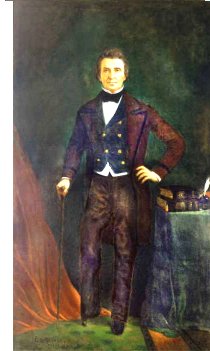
He attended "The Consultation" as a delegate from Mina (later known as Bastrop) and after the provisional government was established he was Untitled-2.jpgcommissioned as a Major on November 29, 1835. His orders were to organize a corps of rangers. He participated in the Battle of Gonzales and the battle of San Jacinto as a part of William H. Smith's 2nd REG. "J" cavalry company. His name appeared on the original muster roll in error, as W. W. Williamson. He received 640 acres for participating in the battle of San Jacinto.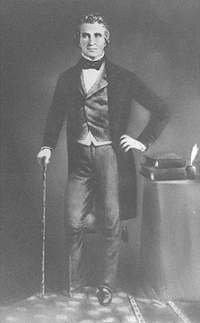
Williamson married Mary Jane Edwards, daughter of Gustavus E. Edwards Untitled-3.jpgof Austin County, on April 21, 1837 after the close of his first circuit, They were the parents of seven children. Williamson resigned his position on the court in January 1839. The following year he was elected to represent Washington County in Congress. He served in the House in the Fifth, Sixth, and Seventh Congress, in the Senate in the Eighth Congress, and in the House again in the Ninth Congress. (His Senate seat in the Eighth Congress was contested, and he eventually lost the seat.)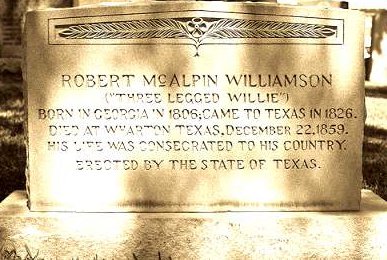
![]()
Page V
It is not an attempt to make it seem older than it is,
for an unquestionably great history does not need to
be given an artificial patina.(a) There had to be a difference because there were still many real freemasons, i.e. working masons, about during the 18th
century. Their names and trades appear in numerous municipal and other records in circumstances which leave no possibility
of their being other than freestone masons.
Thus to Randle Holme, the Fellowship of the Masons and the society called Free-Masons were two distinct entities.
In the very first account of an initiation in England, Elias Ashmole recorded that he was made a FREE MASON at Warrington in
1646. Not a mason, nor even a freemason, but a member of the society which, quite literally, was distinct from both. The
term free in 'free and accepted' had come to have a different meaning from the free in freemason, which latter, as has been
contended, was a contraction of freestone mason. Since the society of Free and Accepted Masons was separate from and
independent of the building trades, free now clearly meant not tied to the same. The word had exactly the same significance
as in the Free House, an inn or public house which is not tied to a particular brewery. During the 17th century the status of
the Master Mason as the principal /operative controller of a major building project had changed, his role being taken by the
gifted amateur, the forerunner of the professional architect of the present day. Building organization and methods were also
undergoing change and the result was relegation of the freemason to a subordinate position. Some grew out of this, e.g.
Robert Smythson, founder of a well known line of architects, who according to a mural tablet in Wollaton Church started his
working life as a 'freemason' and ended it in 1614 as 'architector'.
(b) This difference was recognized at the time. Thus Randle Holme III in 1688,'I cannot but honor the Fellowship of the Masons
because of its antiquity; and the more, as being a member of that society called Free-Masons'.![]()
Page VI
Rosslyn Chapel and look instead to Kilwinning Abbey
From The Fortean Times
The classic theory goes something like this: the Templars, upon their downfall in the early 14th century, fled to Scotland for protection, reorganised themselves under Robert Bruce and led the Scots to victory on the fields of Bannockburn. At some point, they merged/united with/evolved into Freemasonry at Rosslyn Chapel, where, incidentally, their fabled treasures (arks, cups, scrolls, crowns, miscellaneous decapitated heads and other delightful trinkets) lay buried within the crypts of the Sinclair family.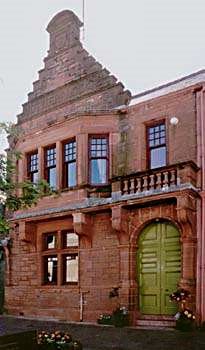
In 2009, I presented a 50-page thesis for peer review by a group of scholars from the USA and UK, who have since endorsed it - a move that might make this one of the most important events in recent Masonic history.
The first High Constable of Scotland (Hew de Morville) "established his caput (administrative and military centre) in Irvine perhaps as early as 1140". [3] The earliest named Lord Chamberlain of the Kingdom (Hubertus, Hebertus or Herbert de Camera 'Camerarius Regis Scotiae') was also "first on record of the ancient Ayrshire family" of Chalmers (c 1153). [4] The third High Steward of Scotland was styled "ecclesiae de Dundonald" during his appointment as Judiciary of Scotland in 1230 - as was his great -grandson when crowned King of Scots in 1371. The near -regal office of Guardian of Scotland was at different times occupied by various Ayrshire nobles: James 5th High Steward, Sir William Wallace, Robert Bruce, Robert II and possibly William Lamberton and John de Soulis - all had strong Ayrshire connections or origins.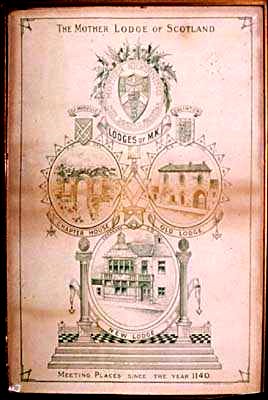
As extant records confirm, Kilwinning Lodge (a.k.a. The Mother Lodge, Mother Kilwinning, Ancient Lodge of Scotland, MK.0.), was the certified Head Lodge of Scotland in 1599, predating the foundation of the traditional earliest Grand Lodge (that of England, est. 1717) by more than a century. Mother Kilwinning warranted the creation of numerous Masonic lodges all over the world, many of which still bear the name "Kilwinning" within their own title. The most famous of these, Tapahannock Kilwinning Lodge, Falmouth Kilwinning Lodge (both in Virginia) and Pythagorean Kilwinning Lodge (in Antigua) were all founded by Kilwinning during a curious schism (1743-1807) in which Scotland was served by both a Head Lodge and a Grand Lodge. Even Canongate Kilwinning Lodge (est. Edinburgh 1677), a founding member of Grand Lodge, was itself a daughter of Kilwinning.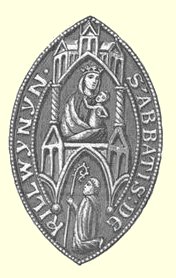
![]()
2 Topographical Account of Cunninghame, 1858, p93.
3 T Campbell: Ayrshire: A Historical Guide, 2003, p204.
4 William Anderson: The Scottish Nation, 1862, vol. 1, p615.
Page VII
From Wikipedia
Fess Parker was born in Fort Worth, Texas, and grew up on a small farm outside San Angelo.[3] He served in the U.S. Navy at the end of World War II. He joined to become a pilot, but was turned down for being too tall at 6 feet 6 inches to fill such a position.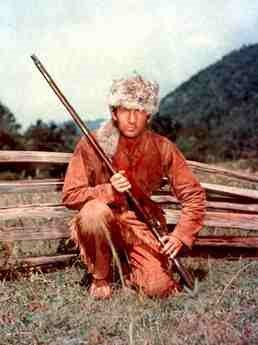
According to Parker himself, when the Walt Disney Company was looking for an actor to play Davy Crockett, they originally considered James Arness for the title role. Parker had recently graduated to a contract weekly actor, but listened to his agent, so he appeared instead in a B movie called Them!, that required only one day's work. He had a small scene in the movie, that of a pilot put into an insane asylum after claiming his plane had been downed by giant flying insects. Arness appeared in a larger role in the same film.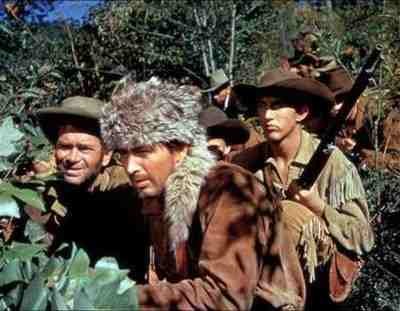
The Fess Parker Winery in Los Olivos, California.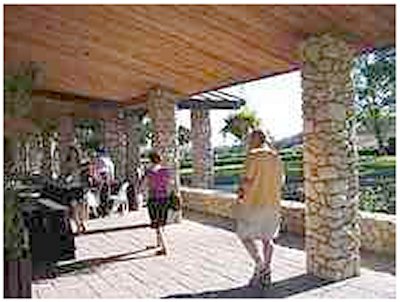
The Fess Parker Winery in Los Olivos, California.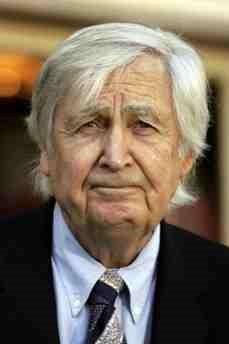
![]()
Page VIII
In the 1840s, the Northern and Southern United States were still quite distinct regions, both socially and economically. The South focused on agriculture, and was still very rural. The North developed larger cities and various industries. Plantation life and slavery dominated the lives of Southerners. A newly acquired letter in our collection (see image at left), dated July 8, 1849, captures the rural life of pre-war Virginia from a Northern point of view. The author of the letter, N. H. Hubbard, was a Northerner (from Massachusetts) who visited Mecklenburg County in southern Virginia, and wrote a letter home to his brothers and sisters.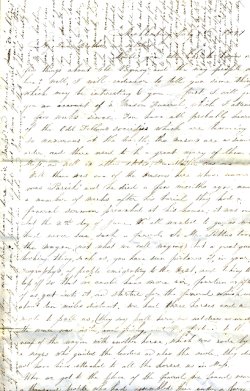
![]()
Mechanics and the Knights of Pythias
From the National Heritage Museum
By 1900, over 250 American fraternal groups existed, numbering six million members. Many of these groups looked to Freemasonry for inspiration in creating their rituals, their symbols and their structure. Two of these groups - the Order of United American Mechanics and the Knights of Pythias - show Masonic influence in the colorful prints reproduced here. The National Heritage Museum collection includes hundreds of prints like these, which are invaluable sources to study Masonic and fraternal history, as well as American history and culture.
orphans and members
who could not work. The group's mission reflected the resentment that some American workers felt toward immigrants who were hired at lower wages. Its emblem, shown at the print's center (at left), consisted of a square and compasses - similar to the well -known Masonic symbol - around the arm of labor.2000_027DI1 Pythias Print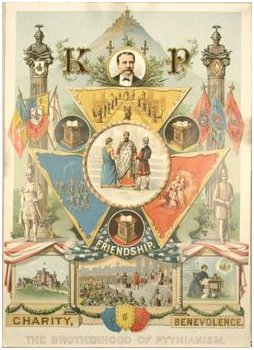
![]()
Page IX
Filed under Corn, Wine, and Oil
This might seem like a strange choice, since I am not a Texas Mason. Someday, I would like to write a Masonic Western, and this seemed like good research material for a future book. I was expecting the book to be very narrow in its focus, and of limited interest except to someone well -versed in Texas history. I was wrong; the book was extremely entertaining, and well worth reading by any North American Mason.
Page X
The Anglo -American colonists of Texas were led by Masons and Texas became a liberal stronghold in the Mexican nation.
There is no credible evidence that Masons entered Texas for the purpose of dismembering Mexico.
The Texas Revolution was an ideological war - a struggle between liberalism and authoritarianism - caused by the failure of the primary liberal revolution in Mexico.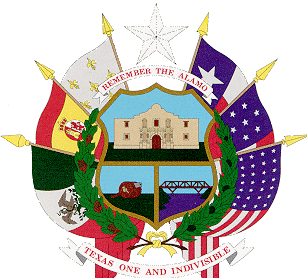
![]()
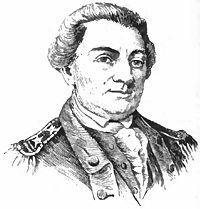
The Baron de Kalb’s heroics during the American Revolution – as well as his military activities in France prior to him arriving in the Colonies – are rather well documented but there remains an elusive aspect of De Kalb’s life. The particulars pertaining to where and when De Kalb became a Freemason continue to hide themselves from researchers.
That De Kalb was a Freemason there is little doubt as his contemporaries clearly regarded him as such. Following his death on 19 August 1780 from wounds received at the Battle of Camden, South Carolina, he was buried with Masonic honors by a military lodge attached to the very British Army that he had opposed and the British commander, Lord Cornwallis, reportedly personally performed the Masonic ceremony
and the Baron DeKalb, if not made in it [Army Lodge No. 27], doubtless affiliated therein, while the Maryland Line were serving under his command in General Gates’ army of the South.
![]()
Page XI
Press of Atlantic City
From The Rural Masonic Lodge Newsletter
"We go back to the stone cutters, back in the Middle Ages," explained Sharpe - although "Stone Cutters" also
happens to be the name of the Mason -like group on a famous episode of "The Simpsons," who boast at their
secret meetings that they kept the Martians under wraps and rig every Oscar night. But back to the story.
"They were operative Masons, and worked at masonry," Sharpe said. "As churches and castles began to fade,
they opened their doors to speculative members. They enjoyed the brotherhood and camaraderie of being in
a union of sorts, a lodge."
![]()
143 Years of Local History Comes To A Close![]()
[Editors Note: I couldn't help but add a comment to the page regarding this story.
In our small town Texas Lodge, Waller Masonic Lodge #808 AF & AM with 73 members, 1 6 members at a meeting is a pretty good turnout.
Corky "]
Page XII

To Have A Good Hard Look At Themselves.
Article reprinted with permission of
the author and The Lodge of Devotion # 723 Brother Don is Past Master of the Lodge of Devotion # 723 and several other lodges In Australia. He is also a member of Grand Lodge Victoria and a retired Colonel of the Australian Army and was stationed in Vietnam in the 19 60's as a Combat Infantry Commander. He had a second career in transport and privatisation Don's writes a monthly column in the Devotion Lodge News called "Don's Diary"
.
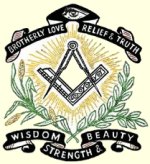

![]()
By
blake
How did the term "Free and Accepted" originate? Ancient craftsmen were very skilled, and their craft was considered to be indispensable to the welfare of both "Church" and "State". For this reason, they were not placed under the same restrictions as were other workers - they were "free" to do their work, travel and live their lives in a manner befitting their importance. In England during the Middle Ages this freedom was rare. Most workers were under bond to the owners of the land on which they worked. Our legendary history carries this freedom for the Operative Mason back to the year 94 6, in York, England.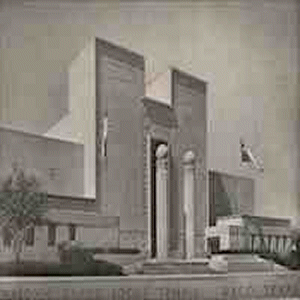
![]()
Page XIII
From The Grand Lodge Of Texas Web Site
On November 21, 2009, the Texas Heritage Society with the Harris County Historical
Commission conducted the marker dedication ceremony for the Anson Jones Texas Historical
Commission marker in Glenwood Cemetery in Houston, Texas. Here are some of the many photos
taken at the dedication ceremony. All photos on this page were taken by Texas Heritage Society Publicity
Chair, Pat Spackey.

ANSON JONES
(JANUARY 20, 1798 - JANUARY 9, 1858)

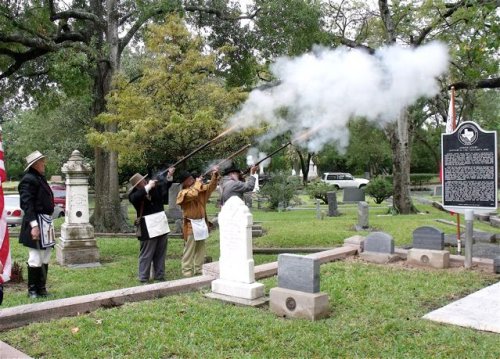
![]()
Page XIV
By Richard Morris - Rye and Battle Observer
Hastings, Sussex, UK
Editor: Quaint English placenames. 'Battle' is indeed the site of the 'Battle of Hastings' (which is nearby) in 10 6 6.Rye does not
derive from 'rye whisky' that would be more familiar to Americans, but probably from French, meaning 'bank' - although
Rye was formerly famous as a center of smuggling. An important medieval port, Rye's seaways are now choked with mud -
and its inhabitants are sometimes dysphemistically referred to as 'mudheads'.
'Tory' means members of the Conservative Party.
Cllr Fawthrop is the chairman of the local authority's planning
committee, which is charged with making decisions on controversial
applications and large developments. And his colleague
Cllr Lock sits on both the borough council and the
county council, where he is head of Transport and Environment.
Editor: Spare me! Some of these councilors probably support cats and dogs homes, too; or confess to watching Britcoms. What a fascinating bunch. As for the Freemasons - well, of course, Freemasons are often the civic leaders, so it comes as no surprise these are some of the most
enterprising gentlemen in the area.
This 'Masons in collusion' story keeps cropping up in Britain. Freemasonry's "pledge to help out other Masons" means also not taking
advantage of others - a promise implicit in what we believe.
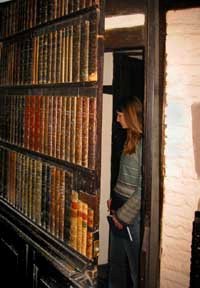
A secret door in the tap room of the Mermaid Inn in Rye provides swift and easy access to a guest room. Very useful for smugglers -ahem - "freetraders".
By the way, the Mermaid Inn structure is not the original. It was rebuilt in 1420... but the cellar dates to 115 6..
Bro Rudyard Kipling![]()
Page XVW. L. Wallingford of Planters Lodge #147 has earned his Class A Certificate for 60 consecutive years. On Feb. 13th Planters Lodge celebrated this unbelievable achievement with a banquet and presentation in Wally's honor. I think that this warrants inclusion in the small town magazine. According to Grand Lodge there are very few to achieve this.
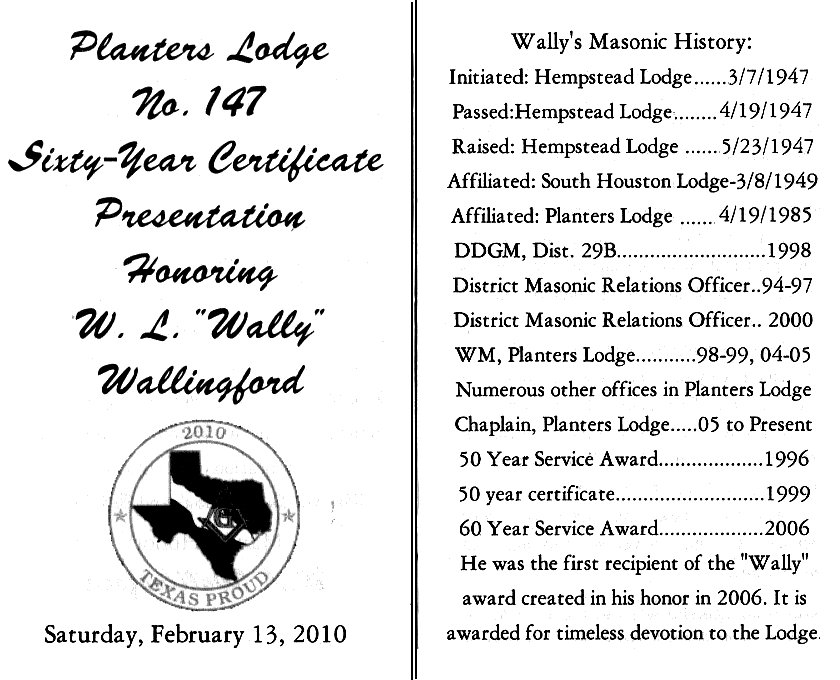
...Wally was Master of Planters Lodge twice. We elected him as Master for our 150th celebration because he means so much to our Lodge. The Wally award was created to honor him and to recognize anyone in the Lodge who shows a similar devotion to the Lodge as he does. Because of his commitment, this Lodge is flourishing when others are having difficult times.
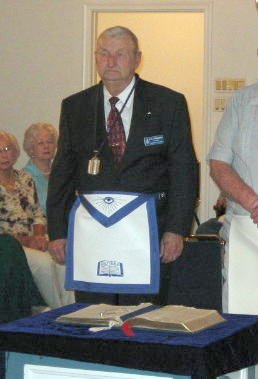
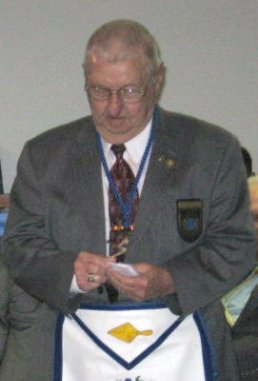
![]()
Page XVI
This Month - The Handbook Of Texas Online
By Corky
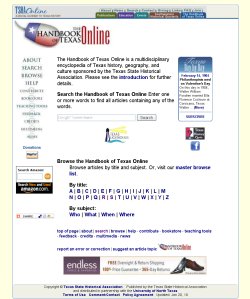
(Editor's Note - For this E -magazine and my Lodge newsletter I borrow many of the stories from a number of sites with permission of the editor or authors and give proper credit when known. Although I try to pick out some of the better stories and articles for Masonic news, education and even a little fun, some viewers would like to read more. For that reason I am introducing some of the better Masonic education and news sites with this series. - Corky)
As a child Andy Rose would ask his dressed -up dad where he was going, and was told "to the Lodge".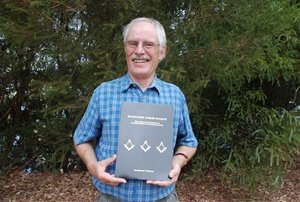
A SECRET WORLD: Andy Rose hopes his latest book may cause readers to revise their view of freemasonry. ![]()
Page XVII
Freemasonry In The American Civil War
From The The Etownian - Campus Life
By Lauren J. Hoffman - Staff Writer
When the Masonic Fraternity is mentioned in conversation, the first thing that comes to mind might be a secret organization featured in the movie "National Treasure." However, for Elizabethtown College students, Masonry hits slightly closer to home.
Voluntary candidacy
Motivation to join for reasons unrelated to personal gain or profit
Favorable opinion of Freemasonry
Desire for knowledge and will to earn it
No prior petition for membership
Willingness to conform to the Ancient Usages and Customs of the Fraternity
Page XVIII
Continued From Page XVII
Name that Mason
Edwin "Buzz" Aldrin, U.S. astronaut
Irving Berlin, U.S. composer
Nat King Cole, U.S. pianist and singer
Bob Dole, U.S. politician
Duke Ellington, U.S. jazz musician
Henry Ford, U.S. founder of Ford Motor Co.
Benjamin Franklin, U.S. founding father
J. Edgar Hoover, first director of the FBI
Harry Houdini, Hungarian escape artist
Rudyard Kipling, U.K. author and poet
Charles Lindbergh, U.S. aviator
Harpo Marx, U.S. film comedian
Wolfgang A. Mozart, Austrian composer
Brad Paisley, U.S. country music artist
Arnold Palmer, U.S. professional golfer
Richard Pryor, U.S. comedian and actor
Ed Rendell, governor of Pennsylvania
The Ringling Brothers, U.S. circus promoters
Mark Twain, U.S. author
George Washington, first U.S. president
John Wayne, U.S. actor
Oscar Wilde, Irish playwright/novelist/poet![]()
From The Rural Lodge Newsletter
A tradition last celebrated in 198 6 will be revived this weekend.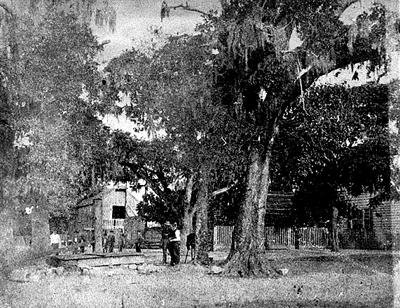
THE WASHINGTON OAKS, shown above in an 18 60s photo, were planted to commemorate the death of President George Washington. One stump remains in the median at Osborne and Conyers streets. (Special to the Tribune & Georgian/Georgia Archives) ![]()
Page XIX
From The The Morton Cemetery History Page /
/
Handy died in 1838, and Lusk died in 1841. On May 25, 1842, John H. Herndon and John V. Morton, administrators for William Lusk, deceased, sold to the highest bidder one hundred acres, more or less, part of labor #1 granted to William Morton. Svant M. Swenson, in trust for the use of Wm. S. Pierson of New York, paid fourteen hundred and one dollars for it. (Deed book A, pp.337 -340, Probate Book A -3, pp.228, # 6 & 237, # 6)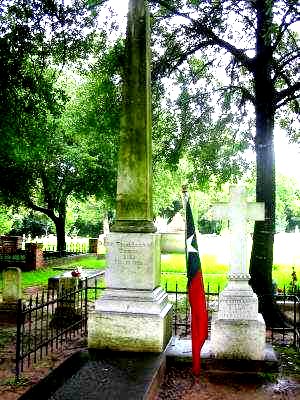
The Grave of Mirabeau B. Lamar (left) and his wife Henrietta
In 1938, a committee was appointed by the Masonic Lodge to consider deeding the cemetery to the cemetery association. No action was taken until December 1943 when a committee was appointed to deed the cemetery to the Richmond Cemetery Association. At the same time, a meeting was called by Mrs. A.P. George, President of the Richmond Cemetery Association, for December 1st at the Baptist Church at 3:00 pm. Judge D.R. Peareson presented a petition "which will incorporate the association and enable it to function as a legal body under state laws." Another meeting was held on January 12, 1944, "to form a non -profit corporation, if those attending so desire."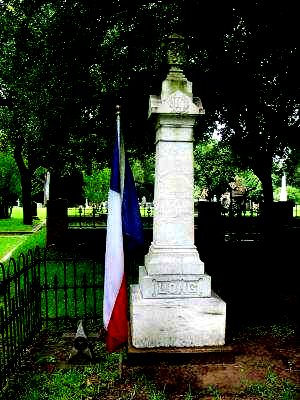
The Grave of first Texas woman settler, Jane Long, known as "The Mother of Texas." ![]()
Page XX
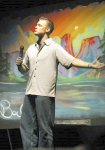
Julian Beever is an English artist who is famous for his art on the pavements of England, France, Germany, USA, Australia and Belgium. Its peculiarity? Beever gives his drawings an anamorphosis view, his images are drawn in such a way which gives them three dimensionality when viewing from the correct angle. It's amazing!!!
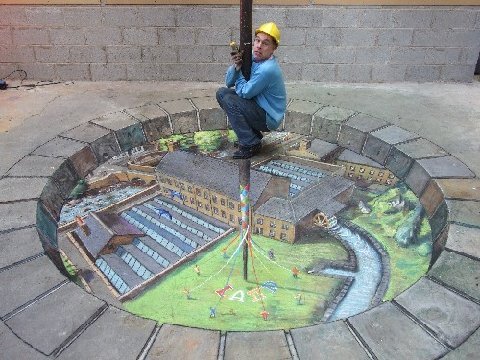
Drawn On A Flat Sidewalk With Colored Chalk.
COWS



Get In The Way
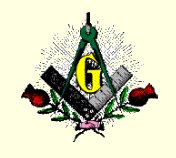
Who wore a Masonic pin
It was old and faded like the man,
It's edges worn and thin.
To give the old brother his due
I said "I see you've traveled East",
He said, "I have, have you?"
Before the all seeing sun
I played in the rubble
With Jubala, Jubelo, and Jubalum.
It's good and sweet and true.....
And if you've traveled as you said
You should give these things their due.
The sweet Masonic prayer.
The vow that you have taken
You have climbed the inner stair.
But the gain comes from contentment
When you're weak and growing old.
For almost 50 years
It has helped me through the hardships
And the failures full of tears...
Death is near, but I don't despair
I've lived my life upon the level
And I'm dying on the square.
Are those that are learned anew
And the old man in the park today
Has changed my point of view.
The only secret is to care
May you live upon the level
And part upon the square.![]()